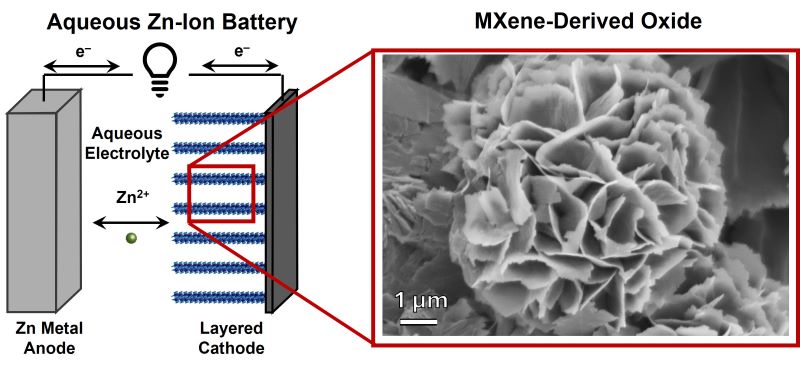In the quest to achieve clean energy and a sustainable future, energy storage devices, such as batteries, play an essential role. Today’s portable electronics, electric vehicles, and grid-scale energy storage are largely dependent on lithium-ion batteries (LIBs), which present safety issues related to their fire hazard, and raise sustainability concerns due to the limited supply of lithium.
An attractive alternative to LIBs are aqueous zinc-ion batteries (AZIBs), which have high performance characteristics, low cost, environmental friendliness and safety. Widespread adoption of AZIB technology is hindered, however, by the need to develop cathode materials that can efficiently insert and extract zinc ions while remaining stable over many battery discharge/charge cycles.
Ekaterina Pomerantseva, PhD, associate professor of materials science and engineering, has received a three-year NSF grant from their Division of Materials Research to explore strategies to improve the cycling stability of layered vanadium oxide cathodes in AZIBs for both slow and fast battery operations.

These strategies include the incorporation of stabilizing cations in the interlayer region of the vanadium oxide structure, the partial replacement of vanadium with another transition metal in the layer structure, and the formation of a tight oxide/carbon contact on the surface or within the volume of the synthesized particles. This project leverages MXene nanoflakes as precursors to create unique morphologies and tunable structures in vanadium oxide electrodes, enhancing zinc-ion diffusion, electrical conductivity, and overall electrochemical stability in aqueous zinc-ion batteries.
Exploration of these approaches is made possible by two prior breakthroughs from Drexel’s Department of Materials Science and Engineering. First, the strategies rely on a synthesis method called chemical preintercalation that was recently developed by Pomerantseva. The second foundational breakthrough involves using MXenes—transition metal carbide nanoflakes discovered here in 2011—as precursors in chemical preintercalation synthesis, enabling the resulting materials to provide greater electrochemical stability and faster battery operation.